Top 7 JavaScript Frameworks in 2025
The JavaScript ecosystem is constantly evolving, with new frameworks emerging and established ones adapting to meet modern development needs. Based on our analysis of thousands of GitHub repositories, here are the top 7 JavaScript full-stack frameworks that are shaping web development in 2025.
#1Next.js

Next.js continues to dominate the JavaScript framework landscape with its powerful React-based architecture. The framework's success stems from its excellent developer experience, built-in optimizations, and seamless deployment options.
The framework has become the go-to choice for React developers who need server-side rendering, static site generation, and API routes all in one package. Its integration with Vercel deployment makes it particularly attractive for teams looking to ship quickly without infrastructure complexity.
Trend Analysis: Next.js shows steady growth, indicating strong adoption in production environments. The framework's focus on performance and developer experience continues to resonate with teams building modern web applications.
Pros:
- Server-side rendering and static site generation out of the box
- Excellent performance with automatic code splitting
- Built-in API routes and middleware support
- Seamless integration with Vercel deployment
- Strong TypeScript support
Cons:
- Learning curve for complex routing patterns
- Limited flexibility for custom server configurations
- Potential vendor lock-in with Vercel ecosystem
Nuxt.js
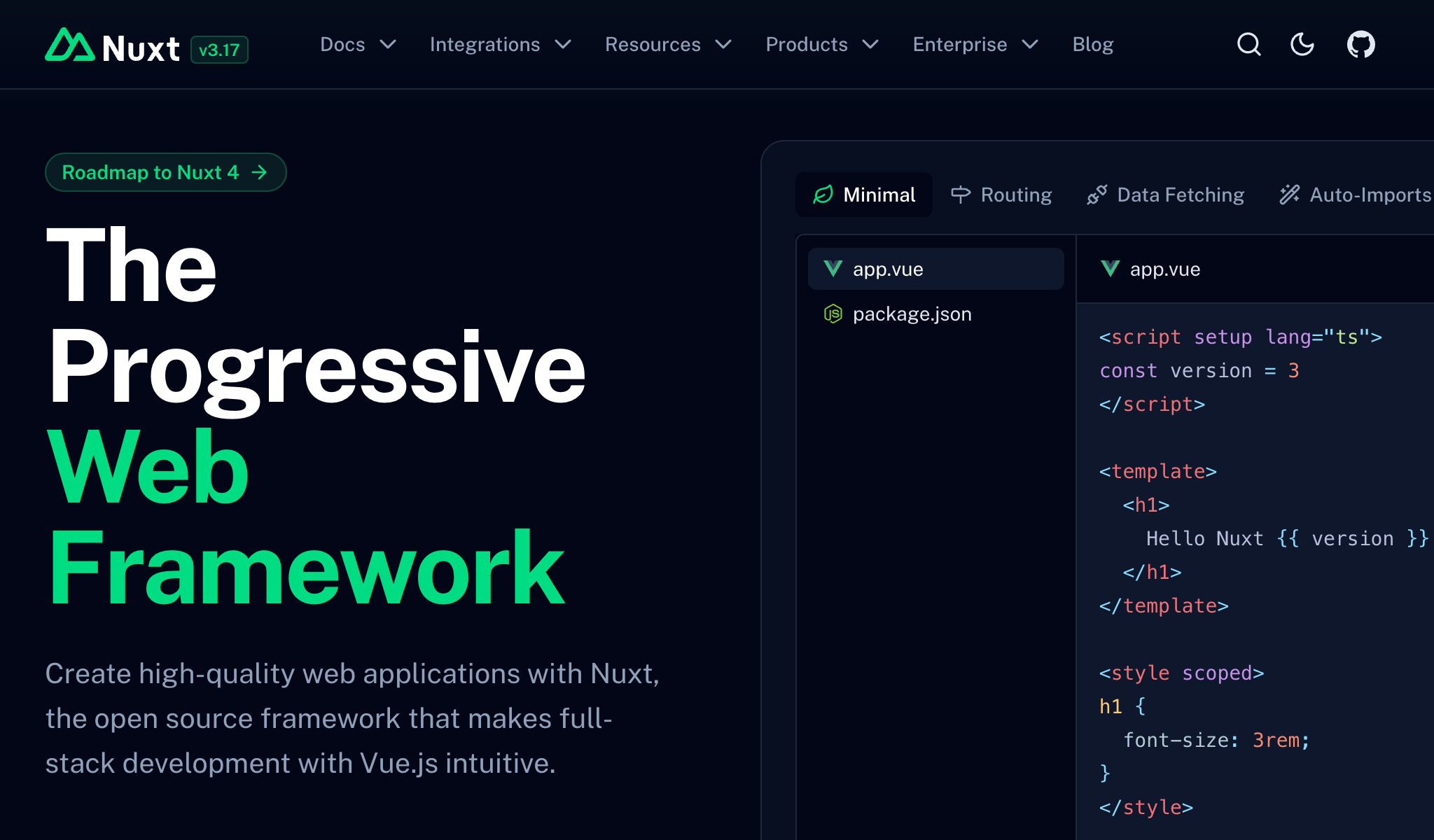
Nuxt.js brings the same level of sophistication to Vue.js that Next.js provides for React. Its convention-over-configuration approach and powerful features make it a favorite among Vue developers.
The framework's automatic routing based on file structure and built-in SEO optimization make it particularly attractive for content-heavy websites and marketing applications. Nuxt.js's module system allows for easy extension and customization.
Trend Analysis: Nuxt.js shows positive growth, indicating strong adoption in the Vue.js ecosystem. The framework's focus on developer experience and performance optimization aligns well with modern development practices.
Notable projects using Nuxt.js include
Pros:
- Automatic routing based on file structure
- Built-in SEO optimization
- Server-side rendering and static generation
- Powerful module system
- Excellent developer experience
Cons:
- Smaller ecosystem compared to React-based frameworks
- Limited third-party integrations
- Steeper learning curve for complex applications
NestJS
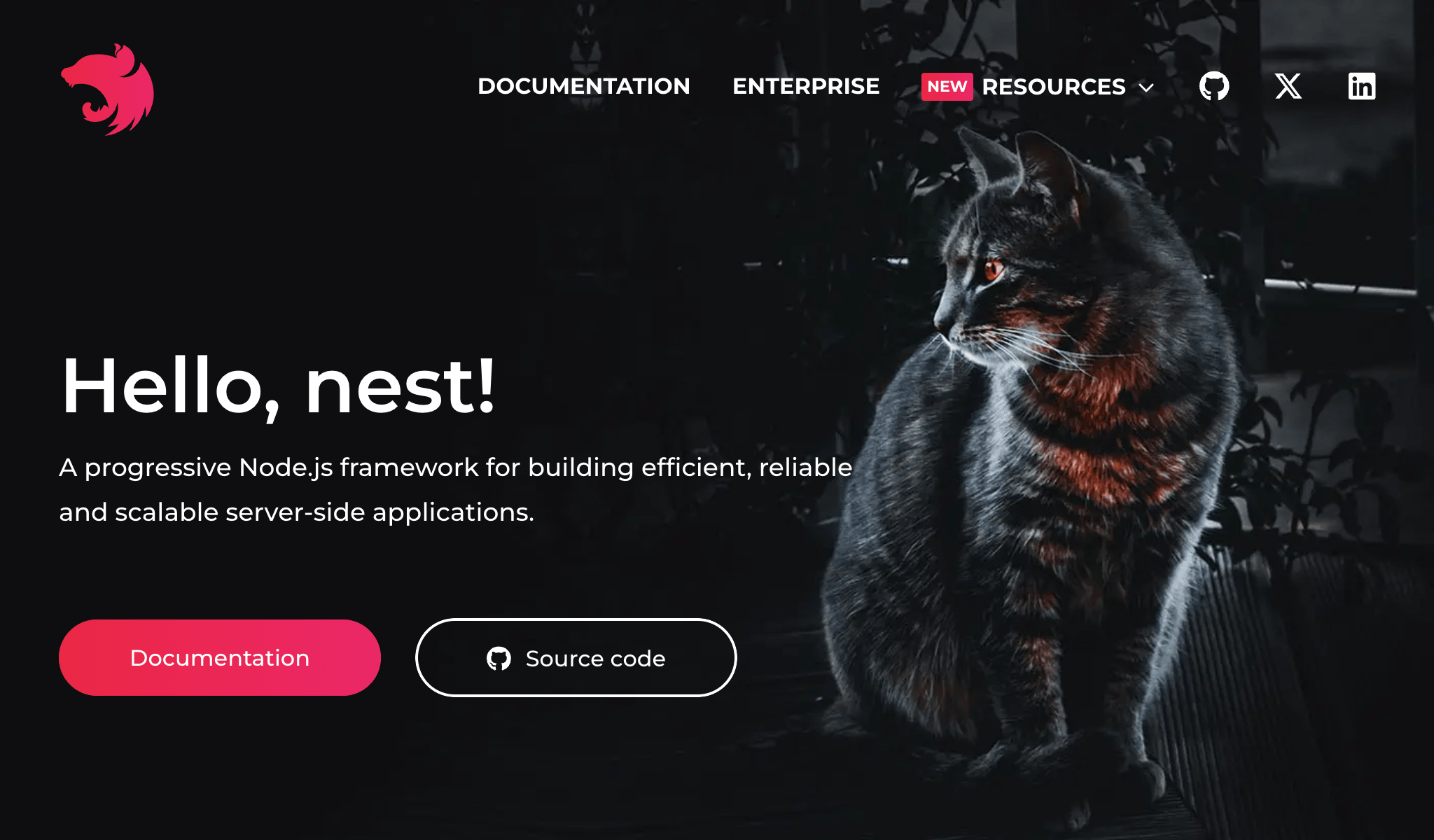
NestJS brings enterprise-level architecture to Node.js development with its TypeScript-first approach and dependency injection patterns inspired by Angular.
The framework's decorators and dependency injection make it particularly attractive for large-scale applications and microservices. NestJS's built-in support for testing and documentation generation supports enterprise development practices.
Trend Analysis: NestJS maintains steady growth, particularly in enterprise environments where TypeScript and structured architecture are priorities. The framework's Angular-inspired patterns appeal to teams with Angular experience.
Prominent repositories leveraging NestJS include
Pros:
- TypeScript-first architecture
- Dependency injection and decorators
- Built-in support for microservices
- Excellent testing capabilities
- Strong enterprise patterns
Cons:
- Steep learning curve for complex patterns
- Over-engineering for simple applications
- Limited flexibility for rapid prototyping
Remix
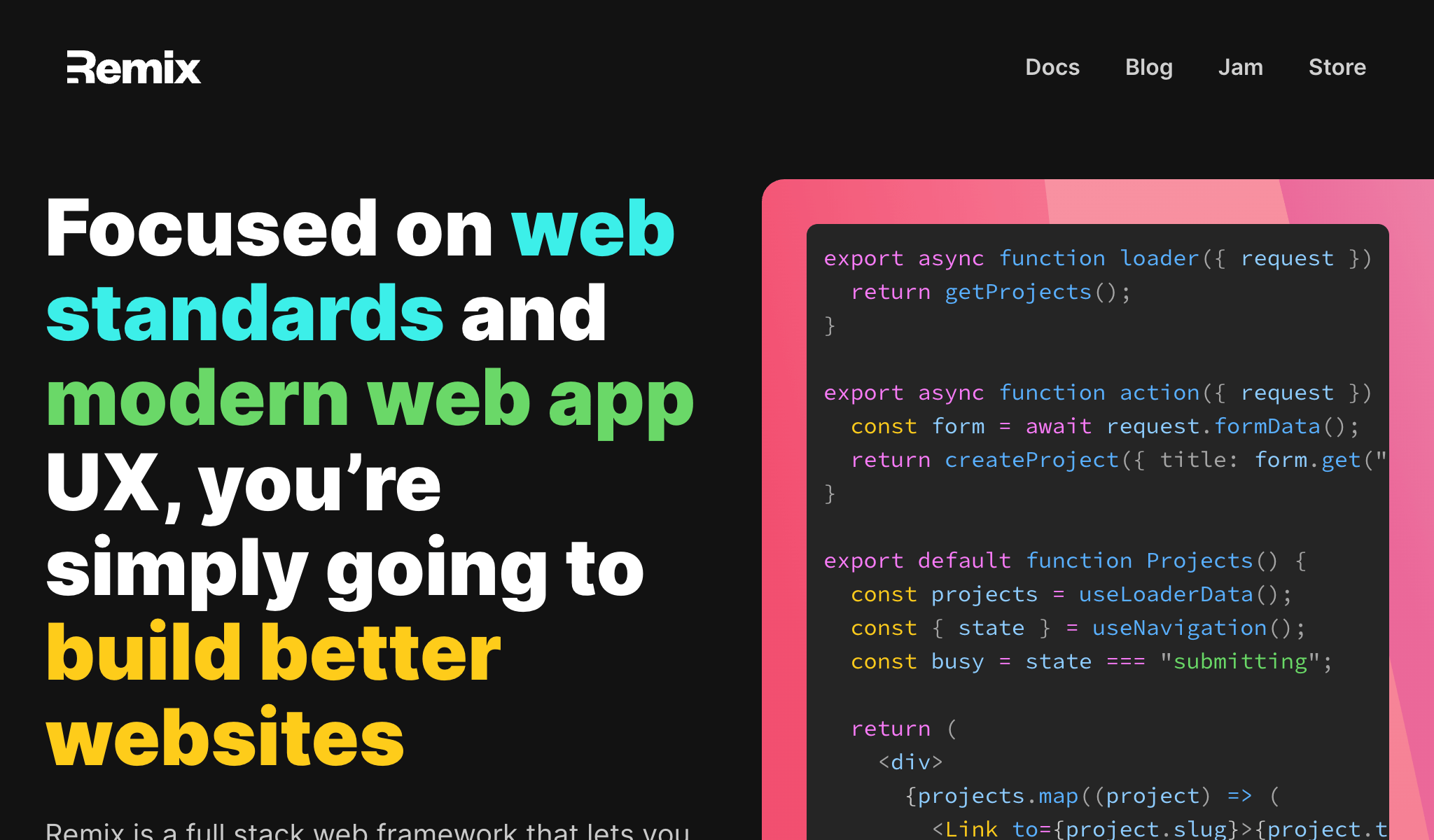
Despite the decline in usage, Remix remains a powerful full-stack framework that emphasizes web standards and modern UX patterns. Its focus on server-side rendering and progressive enhancement sets it apart.
The framework's web standards-first approach and built-in error boundaries provide a solid foundation for robust applications. Remix's focus on user experience and progressive enhancement aligns well with modern web development principles.
Trend Analysis: Remix's decline may reflect market consolidation around Next.js in the React ecosystem. However, the framework's unique approach to web standards and progressive enhancement continues to attract developers building content-heavy applications.
Remix is used in repositories such as
Pros:
- Web standards-first approach
- Excellent performance with server-side rendering
- Built-in error boundaries and loading states
- Progressive enhancement
- Strong focus on user experience
Cons:
- Declining community and ecosystem
- Limited third-party integrations
- Steeper learning curve for complex applications
TanStack Start
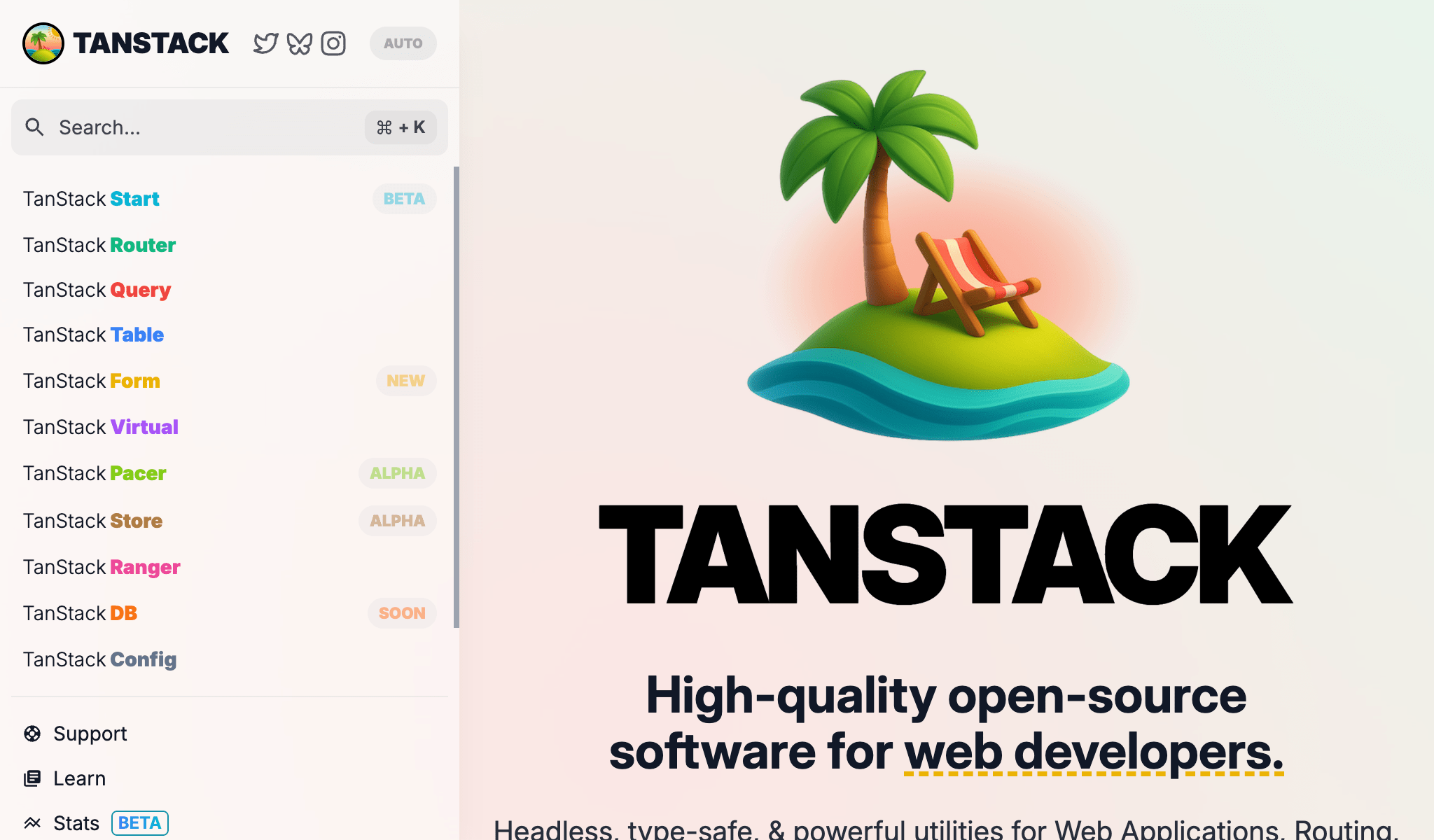
TanStack Start represents the next generation of full-stack frameworks, focusing on developer experience and modern web standards.
The framework's modern development patterns and built-in state management make it an attractive choice for TypeScript projects. TanStack Start's focus on performance and developer-friendly tooling aligns well with modern development practices.
Trend Analysis: TanStack Start shows stable usage, indicating steady adoption in the TypeScript ecosystem. The framework's focus on developer experience and performance optimization positions it well for future growth.
Some notable repositories supporting TanStack Start are
Pros:
- Modern development patterns
- Excellent TypeScript support
- Built-in state management
- Strong focus on performance
- Developer-friendly tooling
Cons:
- Smaller ecosystem and community
- Limited third-party integrations
- Newer framework with evolving patterns
Meteor.js
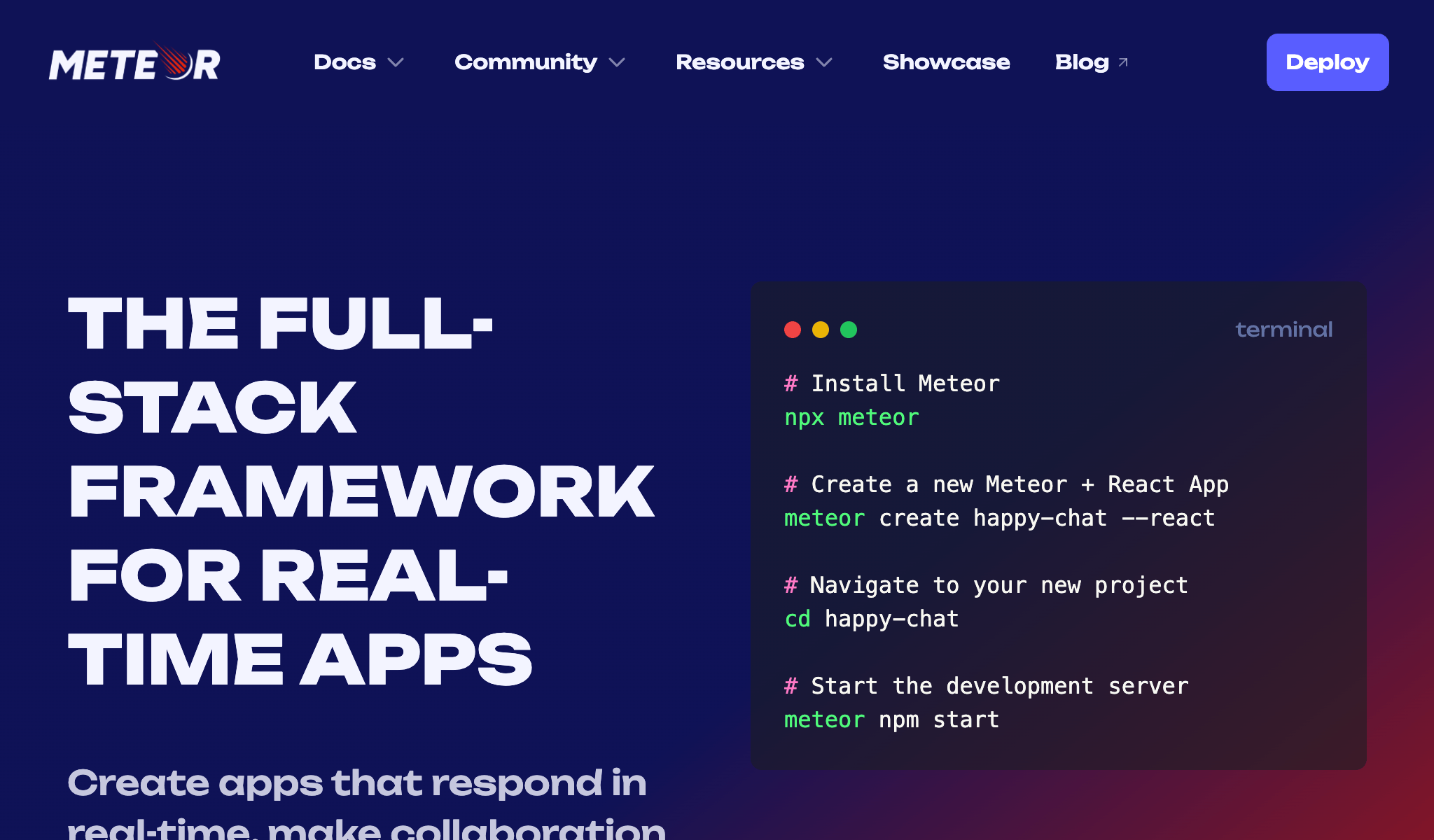
Meteor.js specializes in real-time applications with its reactive data system and seamless client-server communication.
The framework's real-time capabilities and built-in user authentication make it an excellent choice for collaborative applications and live dashboards. Meteor's full-stack JavaScript development approach simplifies the development process.
Trend Analysis: Meteor.js maintains stable usage, particularly in applications requiring real-time functionality. The framework's specialized focus on real-time applications keeps it relevant despite competition from more general-purpose frameworks.
Meteor.js powers projects like
Pros:
- Real-time data synchronization
- Full-stack JavaScript development
- Built-in user authentication
- Hot code reloading
- Cross-platform mobile support
Cons:
- Limited ecosystem compared to other frameworks
- Performance concerns with large datasets
- Steeper learning curve for complex applications
SvelteKit
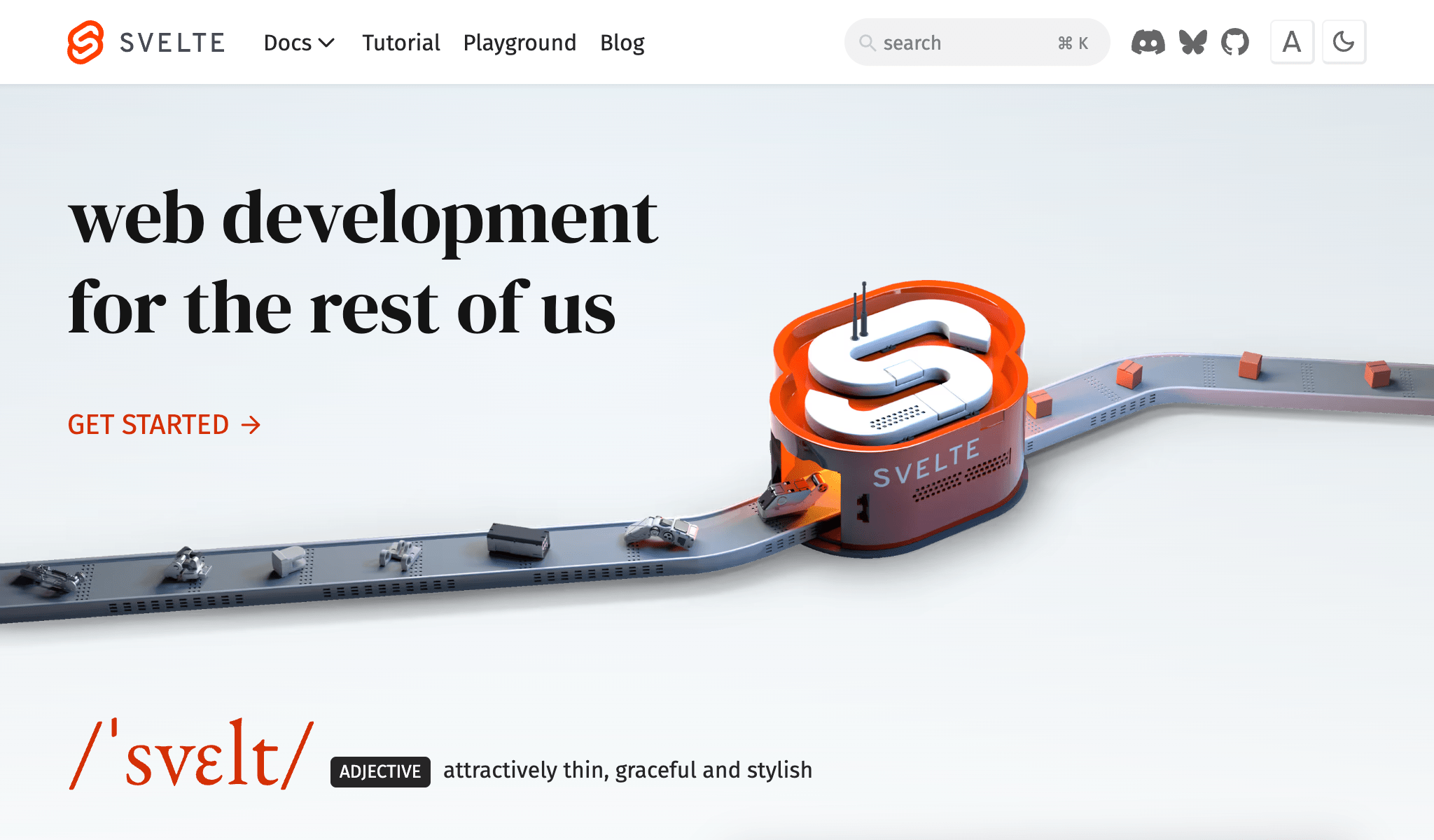
Svelte.js represents a paradigm shift in frontend development with its compile-time approach that generates highly optimized vanilla JavaScript.
The framework's reactive system and minimal runtime make it particularly attractive for performance-critical applications. Svelte's focus on simplicity and developer experience has created a dedicated following among developers who prefer a more straightforward approach to building user interfaces.
Trend Analysis: Svelte.js maintains stable usage, particularly in applications where performance and bundle size are critical concerns. The framework's unique compile-time approach continues to attract developers looking for alternatives to virtual DOM-based frameworks.
Svelte.js powers projects like
Pros:
- Compile-time optimization
- Minimal runtime overhead
- Simple and intuitive syntax
- Excellent performance
- Small bundle sizes
Cons:
- Smaller ecosystem compared to React/Vue
- Limited third-party integrations
- Steeper learning curve for complex state management
Key Trends in 2025
The JavaScript framework landscape in 2025 shows several clear trends. Performance-first development is driving adoption of frameworks like Next.js and SvelteKit, while TypeScript adoption is boosting frameworks like NestJS and TanStack Start. Full-stack integration continues to be important, with frameworks providing seamless development experiences dominating the landscape.
The data shows that developers are increasingly choosing frameworks based on specific use cases rather than following general trends. Next.js dominates for React applications, while specialized frameworks like NestJS for enterprise backends and Svelte.js for performance-critical applications are carving out important niches.
Check out the full dataset on getStack.dev to explore more framework trends and see how these technologies are being used in real-world applications.